I am a GP and mum-of-two, living in east London – with a side-hustle in printmaking. I’m self-taught and have dabbled in etching, monotype and collagraph but am currently working in linocut.

Describe your printmaking process.
I usually sketch out ideas and then either draw directly onto the lino with a sharpie or transfer to lino using carbon paper. Now I am venturing into more complex multi-layer reduction prints I often do a preliminary painting to test the colours. More recently I attempted to plan all the layers using the Procreate app, but in all honesty, I preferred the more haphazard approach!
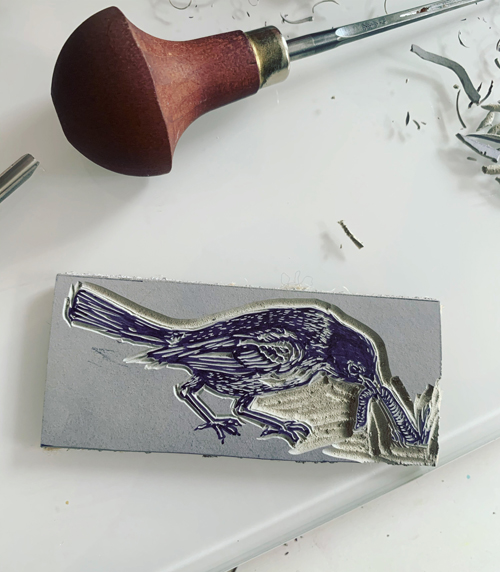
How and where did you learn to print?
My first memory of printmaking is in my Art A-level but that’s where the formal training ends. After falling in love with etching on an evening course at the Royal Drawing School in Shoreditch, I started focusing more on lino printing as it was something I could do easily at home without chemicals or a press (and which I could fit around babies’ nap times!)
My father was a keen artist and maker too and I went on a collagraph course with him (tutored by the amazing Katherine Jones), and in typical fashion, he immediately bought a little table-top etching press. When his printmaking enthusiasm waned I inherited the press and the rest is history…
Oh, and I also spent a lot of my maternity leave during lockdown watching Laura Boswell’s youtube videos!
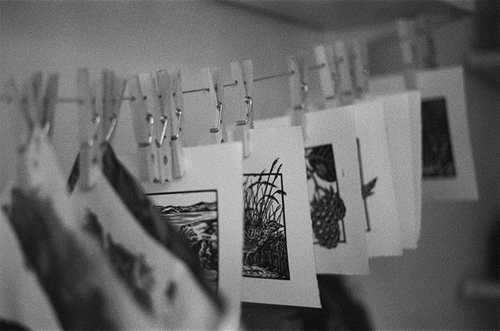
Why printmaking?
I find printmaking a really challenging and satisfying process with so many elements: planning a multilayer print can be really complex and intellectually challenging; then there’s the technical and almost meditative carving phase, but there’s still room for being instinctive and expressive. It’s a great mix of precision and happy accidents. There is always an element of the unexpected and I love the anticipation of the final reveal! There’s also so much to learn and so much possibility and potential for experimentation that I don’t think I will ever get bored.
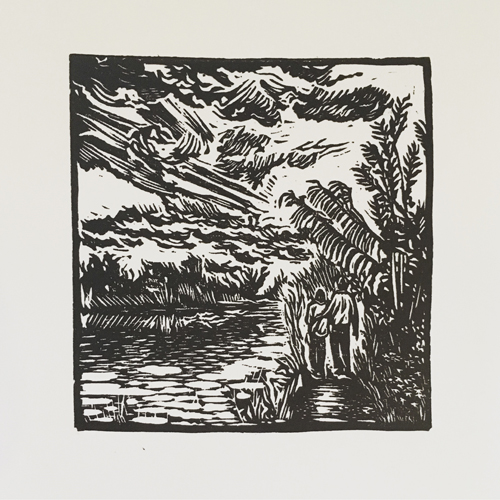
Where do you work?
My ‘studio’ is actually a corner of my husband’s office. My press lives there, and I do my printing there. But I work anywhere – kitchen table, living room floor, a bench in the park!
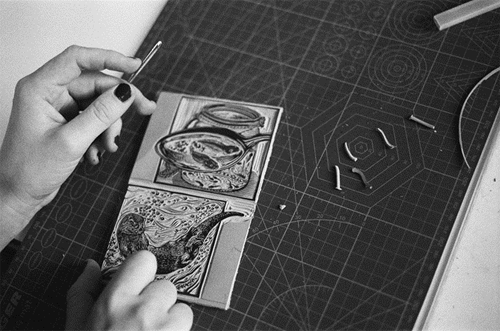
Describe a typical day in your studio.
I wish I had a typical day in my studio – but most of my art is done in snatched evenings and nap times. I am hoping to develop a more regular printing routine now that my older daughter is at school and I have a free day away from my ‘day job’ once a week.
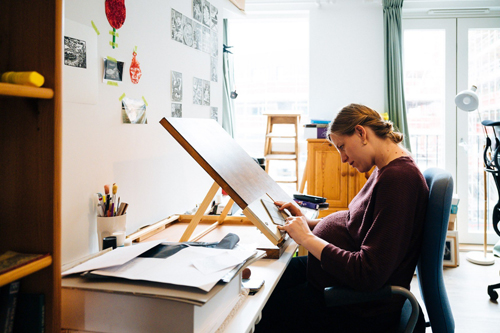
How long have you been printmaking?
I’ve always loved making things and I started printing on fabric as a student when making tea towels and tote bags as Christmas presents for my family. I tried my hand at printing again during a period of time living in Kolkata, India, in 2015, where I was inspired by the colours and patterns of the block-printed textiles I saw there.
I started printing again in the run-up to the birth of my first daughter in 2017. I needed a creative way of processing all the new things I was experiencing and somehow printmaking seemed the perfect medium. I started a project by producing images based on the themes of pregnancy and new motherhood for each letter of the alphabet. I enjoyed bringing together my scientific side (I included things like ‘E is for embryo’) with the more personal and experiential – all in the style of a nursery alphabet poster. My daughter is now 4 and I’m still only just over halfway through the alphabet… but the project opened up the world of printmaking to me.
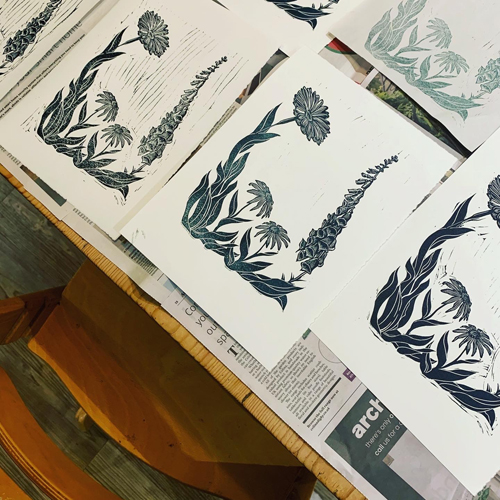
What inspires you?
I’m mainly inspired by my experiences, my home and a sense of place. Since my children were born, I’ve loved the idea of recording our daily life and family experiences in my art and trying to make an effort to draw them as much as possible. At the moment I am working on a series of landscape prints of local spots which are special to us and which remind me of particular moments in time. We live in a beautiful, green part of London and I think the juxtaposition of the urban elements and architecture with nature works well in print.
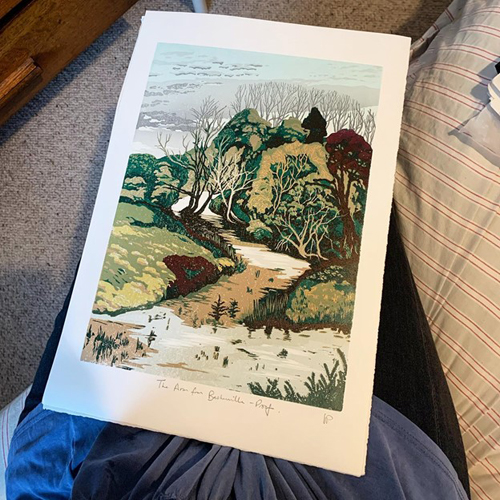
What is your favourite printmaking product?
Discovering Caligo Safewash inks and Ternes Burton pins were both huge printmaking breakthroughs for me, but I think my most prized printmaking possession is my ABIG press. It was just such a step up from the back of a spoon!
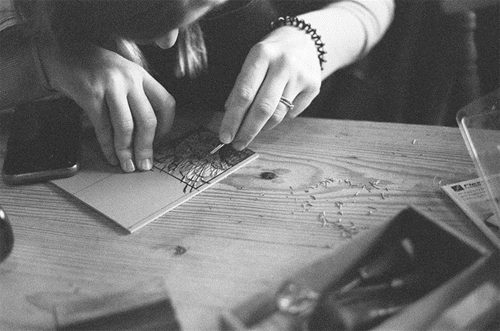
What have you made that you are most proud of?
I am really proud of the work I did for the book ‘The Wild Isles’, an anthology of nature writing edited by Patrick Barkham. As a child, long before I decided to pursue a career in medicine, I wanted to be a book illustrator so it’s a bit of a dream come true to be published – especially as the cover was by legendary printmaker Angela Harding.
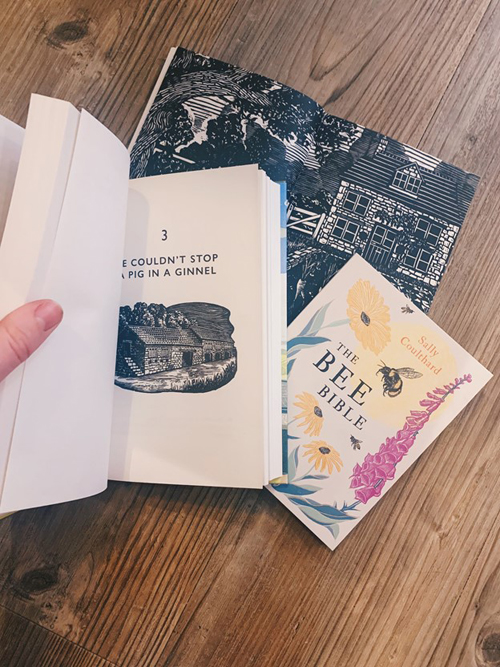
Where can we see your work? Where do you sell?
You can see my work on my Instagram, or on my website.
I have also recently opened a small online shop with a small range of my prints for sale.
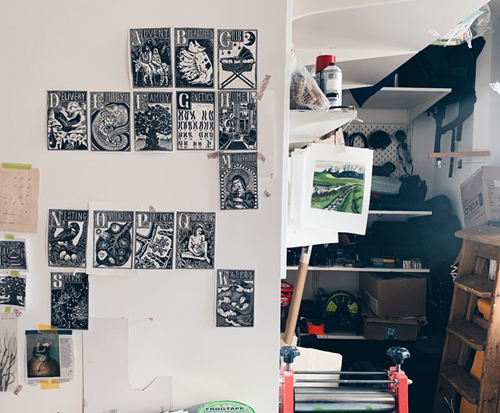
What will we be seeing from you next?
There’s so much on the to-do list! I’m hoping you’ll see me finish a few long term projects. I’d like to complete my series of reduction landscape prints of the Queen Elizabeth Olympic Park, and finish the ‘Maternity Alphabet’.
I would like to get around to printing editions of some of the prints I have produced as book illustrations and ideally adding to my shop offerings with posters and greeting cards.
More experimentation with monoprint is also high on the agenda and I’d love to try my hand at wood engraving.
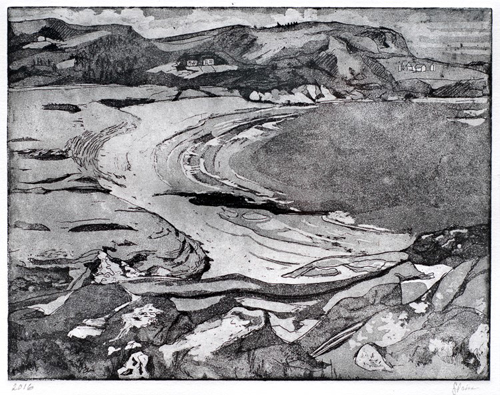
Do you have any advice for other printmakers and creatives?
Don’t compare yourself to others. It’s so easy to scroll Instagram feeling envious of other people’s work, but I’m learning to find satisfaction in what I am achieving and having confidence in the uniqueness of my prints, as well as making peace with the fact I can’t do everything I would like to at this moment in time. There are lots of benefits to having printmaking as a part-time project as well as the limitations and frustrations, and I’m trying to remember I’m no less of an artist just because I have another job too!
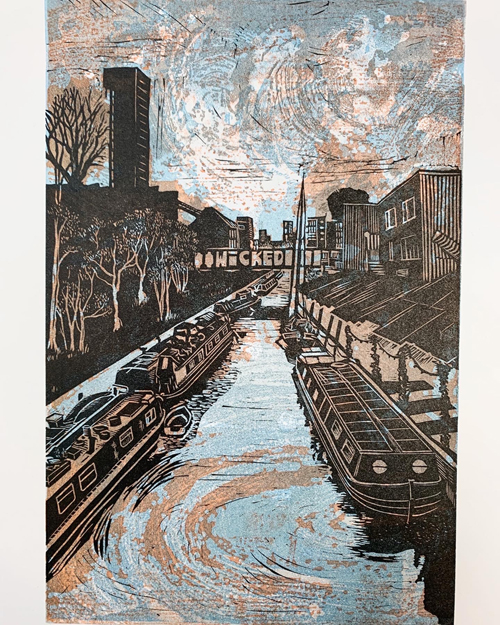
B&W images credit: @tomalprice
